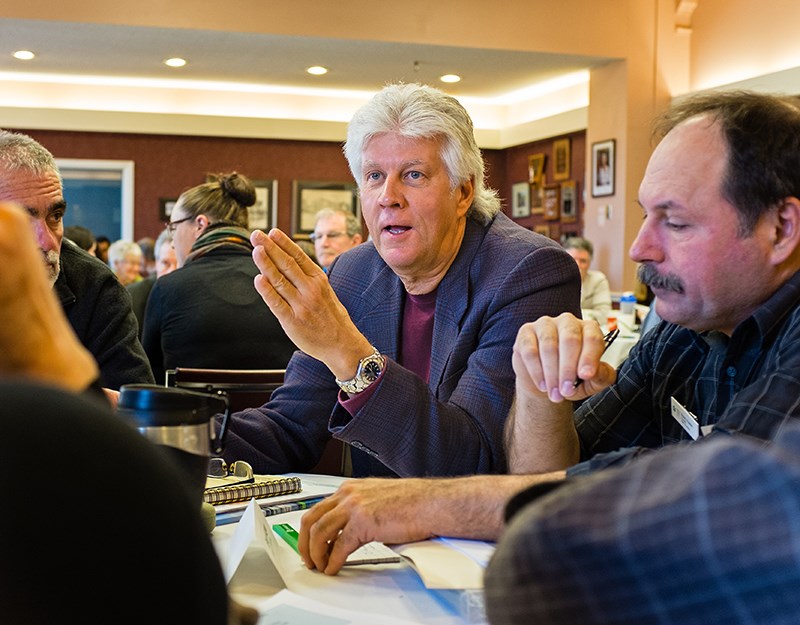Troy Shantz
Sarnia went to great lengths to properly dispose of sediment scooped up during this winter’s $3-million dredging project, but that’s not always the case in the Great Lakes.
In Lake Erie, dredging has been linked to the growth and spread of algae in recent years, said Don Ciparis of the National Farmers Union.
“I was sort of astounded,” Ciparis said at a meeting of the International Joint Commission (IJC) last week at Sarnia’s Lochiel Kiwanis Community Centre.
“Put it on the land — landfill it.”
The IJC has organized a series of meetings on both sides of the border to gather feedback from residents on the Great Lakes.
In 2014, algae blooms engulfed parts of Lake Erie and forced Toledo, Ohio to shut its water intakes because of the presence of liver-damaging microcystins.
The algae was linked to an excess of phosphate in the water from agricultural run-off.
According to Ciparis, dredging by the Army Corps of Engineers disrupted the lake bottom and compounded the problem, resulting in blue-green blooms that were visible from space.
Instead of dumping the dredged sediment on land it was dispersed in the water, he said.
“I’m not suggesting dredging should be banned, but if you’re seeing a correlation there with algae blooms and dredging, why not keep it out of water? Do something really simple,” Ciparis said.
“If Sarnia can do it, maybe the U.S. Army Corps of Engineers should be invited to sort of look at Sarnia’s experience.”
Participants also expressed concerns about U.S. President Donald Trump threat to slash 97% of funding used to protect the world's largest freshwater source.
The proposed cut would $300 million spent annually on the Great Lakes Restoration Initiative cut to around $10 million.
Kris Lee, Canadian, chairperson of the Binational Public Advisory Council, said cutbacks will change the focus of Great Lakes advocacy.
“If the government objective is jobs, then explain why reducing the funding for whatever areas is going to make you lose jobs, because you have to speak their language.”
Lee’s U.S. counterpart, Patty Troy, echoed her sentiments.
“You have to be advocates, you have to be willing to speak up to your elected officials, you have to be able to effectively state what is needed and why, and convince people that that’s the case.”
